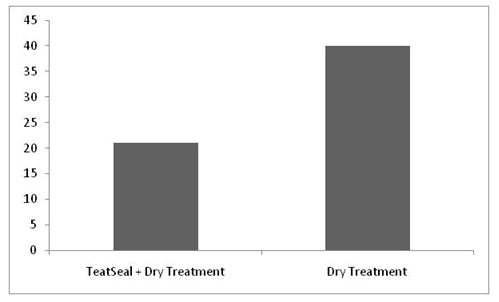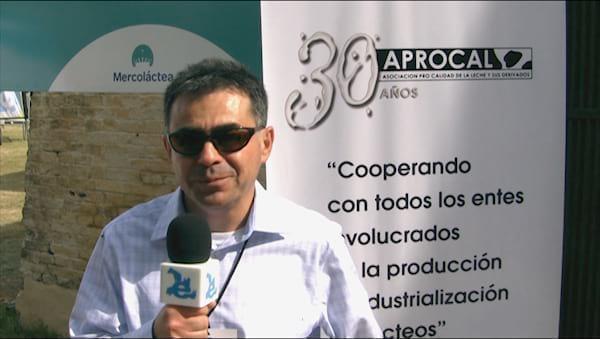internal teat sealant
Efficacy of an internal teat sealant in the prevention of clinical mastitis ocurring in the first 100 days in milk
Published: May 21, 2012
By: Martin Pol (Lactodiagnostico Sur), Salvador Bonfati (Pfizer)
New intramammary infections are frequent during dry period. Incomplete or delayed formation of keratin plug in the streak canal has been proposed as risk factors for new intramammary infections. A significant number of intramammary infection acquired during the dry period are likely to develop mastitis in the subsequent lactation. The objective of this study was to determine the effect of infusing with an internal teat sealant at dry-off used as an adjunct to long-acting antibiotic infusion at dry-off, on the risk of experiencing a clinical mastitis event between parturition and 100 days in milk (DIM).
Materials and Methods
Data was obtained from a commercial free-stall Holstein dairy herd in Argentina. Cows were producing on average 34 L (75 lbs) per day. To be eligible for enrollment, cows have to have 4 functional quarters and no clinical mastitis at dry-off, have an expected dry period between 21 and 75 days and have received no parenteral antibiotic treatment at dry-off or during the dry period. Individual somatic cell count was not considered for enrollment. Following the last milking all four quarters were abruptly dry treated with an intramammary infusion containing 500 mg of cloxacillin (benzathine). Immediately after, two contralateral quarters (LF/RH) were treated with an internal teat sealant (TeatSeal, Pfizer). The alternate two contralateral quarters (RF/LH) were considered control quarters. After drying the cows, all four teats were dipped with a 1% iodine-based antiseptic.
Dry cows were housed in dry lots until calving. Cows were moved to a maternity pen hours before calving. Cows were then moved into a lactating-cow pen. Milking procedures include forestripping and examination for abnormal milk at each milking (3 times per day). Clinical mastitis was defined as abnormal milk with or without local inflammation and clinical cases were diagnosed by milkers. A 21-day gap was used to consider a new clinical case. Chi-square analysis was used to study association of treatment at dry off with clinical mastitis events between parturition and 100 DIM. Statistical analysis was performed using Statistix 8.0 and significance level was set at 0.05.
Results
Of 260 cows initially enrolled, 239 completed the study. Dry-off dates ranged June 6, 2010 to September 30, 2010. Dry-off length average was 47.8 days (Min=23, Max=72; SD=7.7). Causes for cows to be omitted from final analysis included shorter dry period (5 cows), longer dry period (9 cows), or deaths (not associated to mastitis) during the study (7 cows). The proportion of quarters with a clinical event between parturition and 100 DIM was significantly lower for treated (4.4%) compared to controls (8.4%) (P<0.05) (Figure1). Three clinical cases resulted in non functional quarters in the teat sealant group while 8 clinical cases resulted in blind quarters in the control group.
Figure 1: Number of quarters with a clinical mastitis event between parturition and 100 DIM.

Clinical cases occurred earlier in lactation for control quarters (Mean= 40.9 days, SD= 27.2) compared to quarters treated with internal teat sealant (Mean= 42.7 days, SD=34.2). Economic evaluation of the use of teat sealant was studied considering discarded milk, treatment cost and production losses due to non functional quarters and due to clinical mastitis effect on lactation curve (Table 1). Cost benefit ratio of including teat sealant during the dry period was estimated in 1:5.
Table 1. Partial budget estimation of economic benefits after including internal teat sealants to conventional dry therapy. All values are expressed in liters of milk and based in 239 animals.

Related topics
Join to be able to comment.
Once you join Engormix, you will be able to participate in all content and forums.
* Required information
Would you like to discuss another topic? Create a new post to engage with experts in the community.
Create a post



